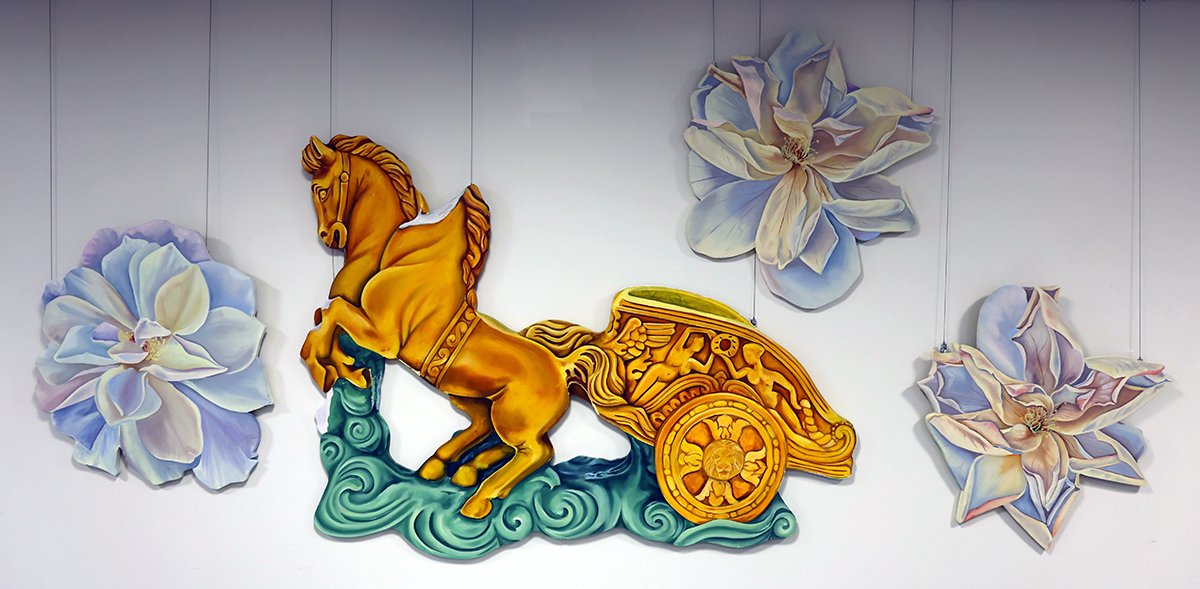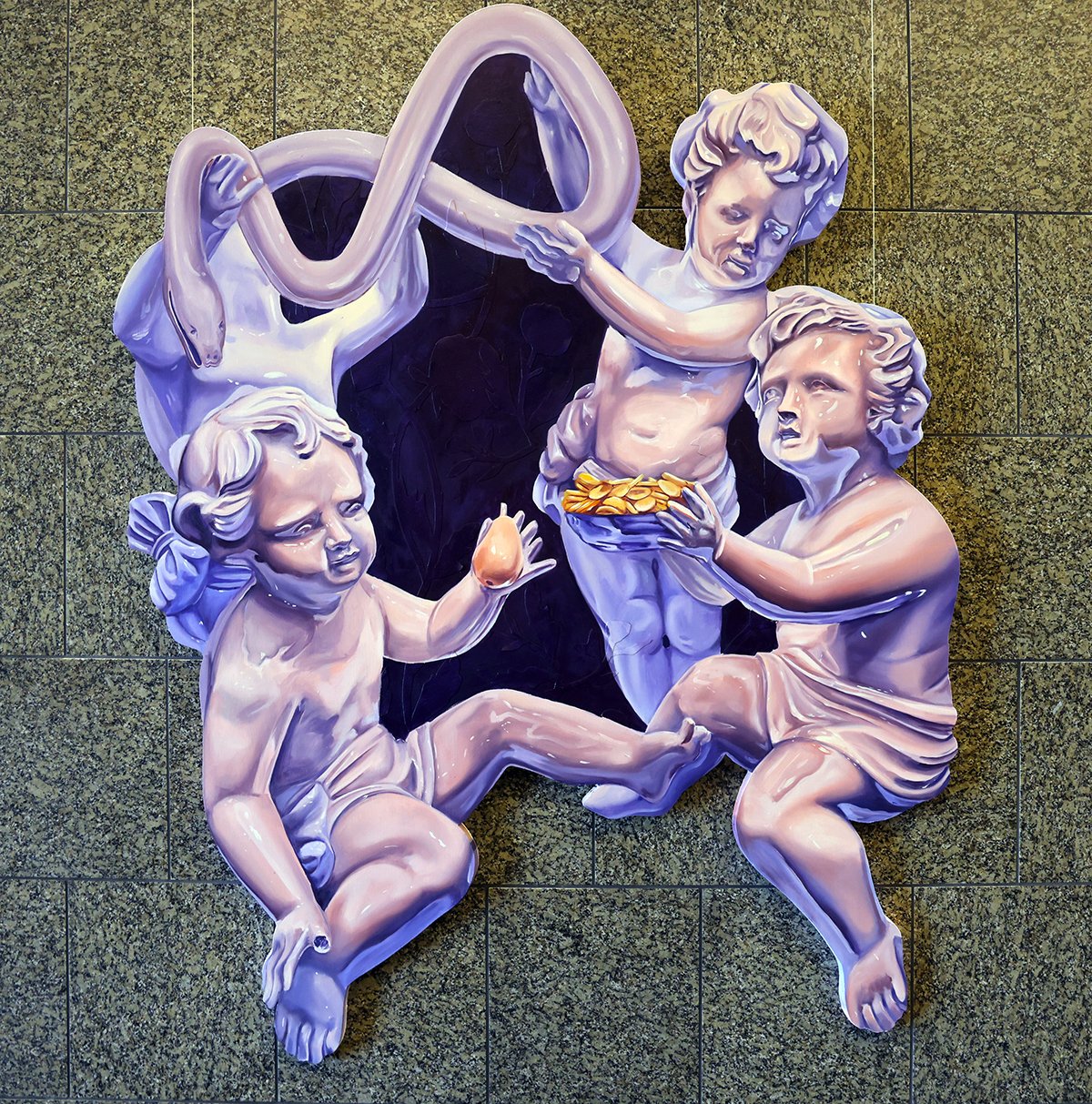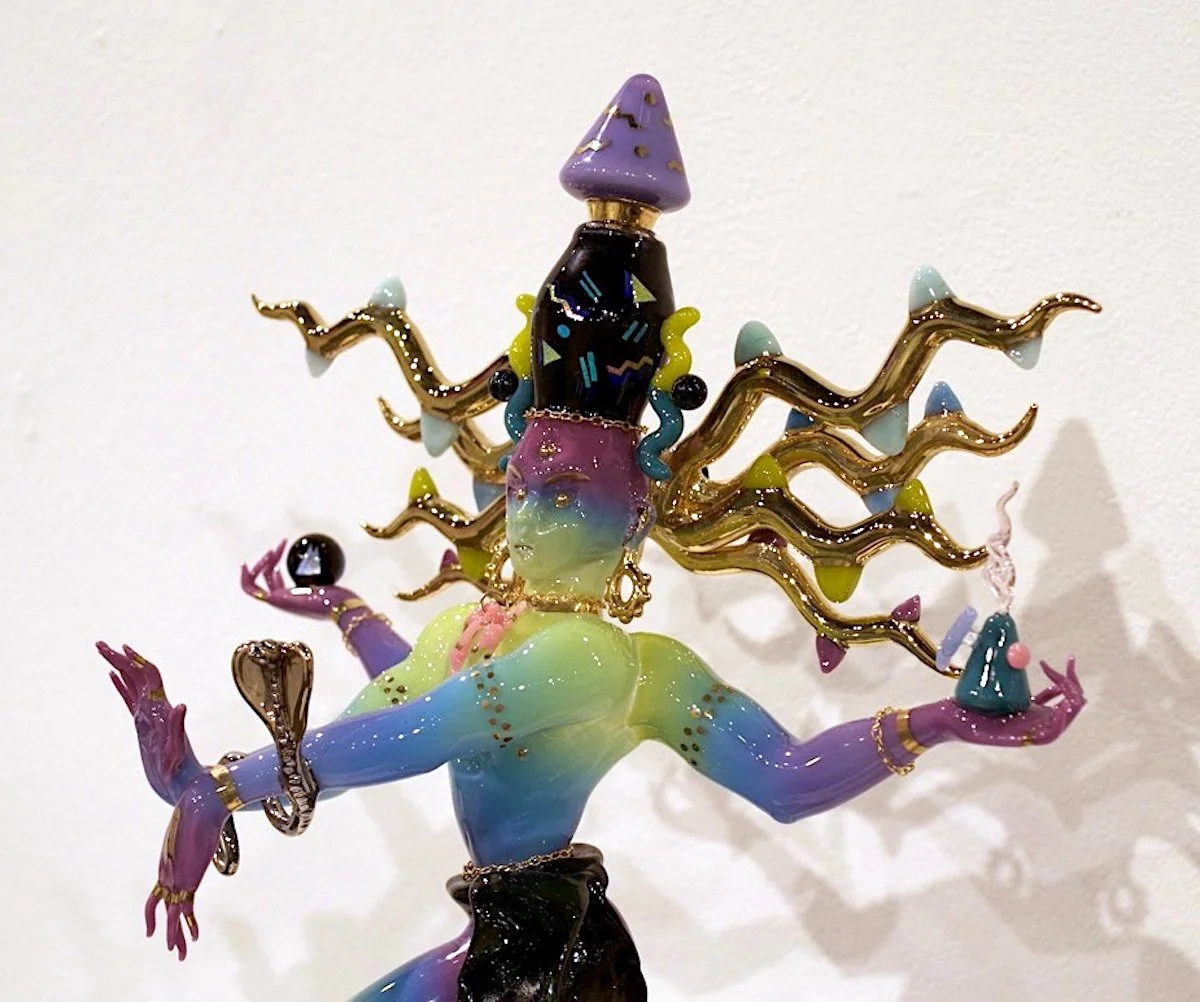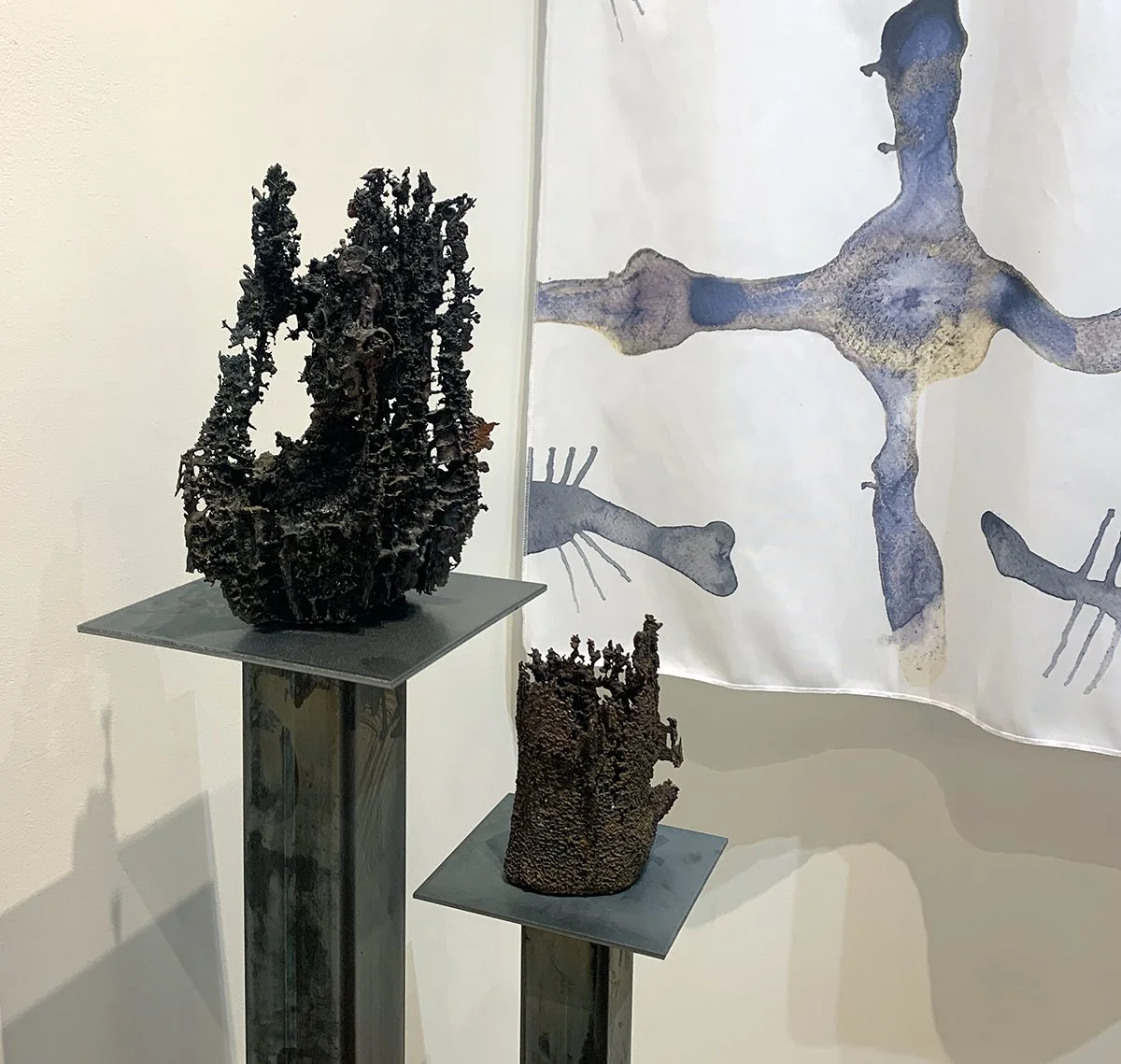What we hold dear
Jenna Annunziato: What we hold dear
The Gallery at Taza Coffee House
4430 S. Adams County Parkway, Brighton, CO 80601
June 6–August 26, 2025
Admission: Free
Review by Parker Yamasaki
The Adams County Government Center is in a beautiful place—plunked into the plains northeast of Denver, with a zoomed out view of the Rockies—but it is not, itself, a beautiful place. The building is all brick, steel, and security checks, with as much ambiance as a DMV waiting room.
An installation view of Jenna Annunziato’s exhibition What we hold dear at The Gallery at Taza Coffee House. Image courtesy of The Gallery at Taza Coffee House.
That doesn’t preclude the building from hosting moments of beauty, the unique task of the Gallery at Taza Coffee House in the central lobby, where until August 26 you’ll find the oil-painted panels that make up Jenna Annunziato’s exhibition What we hold dear.
Jenna Annunziato, Look at That Horse Diptych, oil on panel, 47 x 27 x .25 inches each. Image courtesy of The Gallery at Taza Coffee House.
The exhibition title looks like a statement but presents clear questions: Which objects do we imbue with special meaning? How do we treat them differently? What happens when they inevitably crack and crumble? Do they lose their value? What about their meaning?
Jenna Annunziato, Crying Cherub Diptych, oil on panel, 48 x 23 x 1 inches each. Image courtesy of The Gallery at Taza Coffee House.
Take a pair of glossy cherubs near the entrance of the coffee shop called Crying Cherub Diptych. One of the cherubs is rendered intact, gleaming with cleverly painted highlights that give it the shiny appearance of porcelain. The other cherub is an exact replica, except that its leg, hand, and head are broken off. The panel itself is severed at the head, too, creating an entirely different canvas shape, more reminiscent of a chipped Hellenic statue than a china cabinet tchotchke.
Jenna Annunziato, Thots and Prayers, oil on panel, 46 x 25 x 1 inches. Image courtesy of The Gallery at Taza Coffee House.
Next to the cherubs are a pair of hands, Thots and Prayers, politely clasped in a loose prayer. There is a hole painted where the palms should meet, indicating these hands were a vessel, probably a vase, hinted at by a floral design on the wrists. The whole panel is painted in pinks, purples, and peaches, lending the painting a cheesy romanticism that’s counterbalanced by a damaged set of hollowed out fingers where a middle and index once were. Their absence, again, not-so-subtlely gestures at imminent demise—perhaps a trip to the landfill.
A view of the site-specific mixed-media installation by Jenna Annunziato and Adam’s County Residents, Trinkets and Treasures of Adams County, 2025. Image courtesy of the artist.
Annunziato’s paintings spare the objects this unceremonious tossing, though, immortalizing their late stages in a way that a society focused on shiny-and-new might never think to. In this way, the exhibition is about the opposite of decay—it’s about preserving what’s left. What’s more, Annunziato surveyed Adams County residents over the spring and collected personal stories about the trinkets they can’t let go of, despite their wear and tear. Some of the items are on display in a case in the building lobby.
Jenna Annunziato, Chariot, oil on panel 45 x 37 x 1 inches; Jenna Annunziato, The Process of Decay, oil on panel, 30 x 28 x 1 inches, 27 x 27 x 1 inches, and 26 x 30 x 1 inches. Image courtesy of The Gallery at Taza Coffee House.
On another wall, two separate pieces are hung so that they merge into one composition: Chariot, depicting a golden pegasus emerging from deep teal waves, the tip of its wing missing; and The Process of Decay, three individually hung flowers in three different states of aging. They could have been hung as separate pieces—two examples of ways that time takes its toll. And, generally speaking, we’re comfortable with the way that nature falls apart, taught from a young age about the circle of life.
A detail view of Jenna Annunziato’s Chariot, oil on panel 45 x 37 x 1 inches and The Process of Decay, oil on panel, 30 x 28 x 1 inches, 27 x 27 x 1 inches, and 26 x 30 x 1 inches. Image courtesy of the artist.
Of course, it’s not just fragrant and delicate petals that fold in on themselves, wrinkling and rotting as they do. It’s also items that are hard to the touch, too—statues, relics, artifacts. Man-made objects that mean so much to us, either because of, or despite, their appearance. Arranging the two works with one another hits the viewer over the head—in a welcome way—with the universal process of decay.
An entrance hallway outside of the café has three additional pieces by Jenna Annunziato, including The Persistence of Naivety, left, and The Exchange. Image by Parker Yamasaki.
That Annunziato’s eye is trained to the small objects of everyday life lends her work a sort of humanly humor to it. That the show is hosted in a government building feels either downright cynical, or itself quite funny—I can’t decide.
To host the show in a church would be just as effective but to a different end, drawing attention, perhaps, to our own mortal fragility. But posted on the walls and in the halls at the entrance to a giant government complex—an actual embodiment of the structures that prop up our own fragile society—is poignant. Especially now, as we’re just beginning to see what an assault on arts and humanities looks like to the 47th president of the U.S.: cuts in funding, censorship at historic sites, and shuttering entire departments.
Jenna Annunziato, The Exchange, oil on panel, 45 x 59 x 1 inches. Image courtesy of The Gallery at Taza Coffee House.
Whether arts and humanities will survive this term is not the question; they will. The question is: where? Major museums and commerce-focused galleries have a firm foothold in the art world. It’s the small and unexpected spaces, some of which rely heavily on federal or state support to develop, that we stand to lose.
A woman grabs a lunch bite under Jenna Annunziato’s works Chariot and The Process of Decay. Image by Parker Yamasaki.
With that in mind, it may take more effort on the part of the viewer to seek out uncanny art experiences. Do so, and you may end up in the echoing halls of a government center. In a place that necessarily submits to a belief in order and regulation as foundational to its own existence, gazing at an array of works proves the futility of such efforts.
Parker Yamasaki (she/her) is a western states arts writer based in Lafayette, Colorado. She is a culture reporter for the statewide, nonprofit newsroom The Colorado Sun. She is also a freelance critic. Her work has been published in The Chicago Reader, Newcity Chicago, Austin Monthly, and various online publications.

















